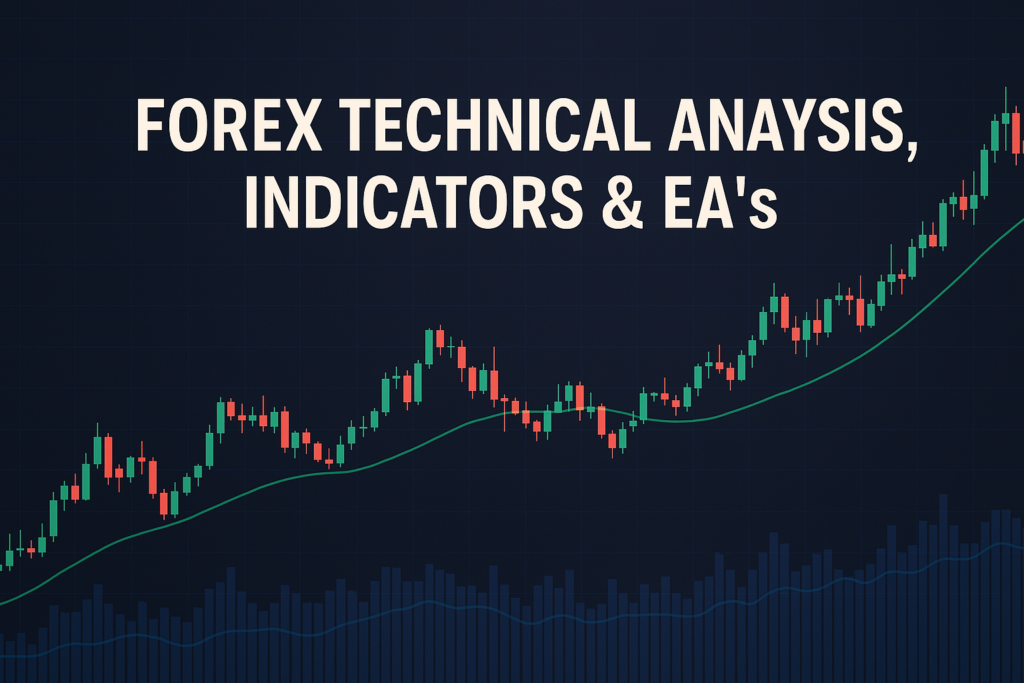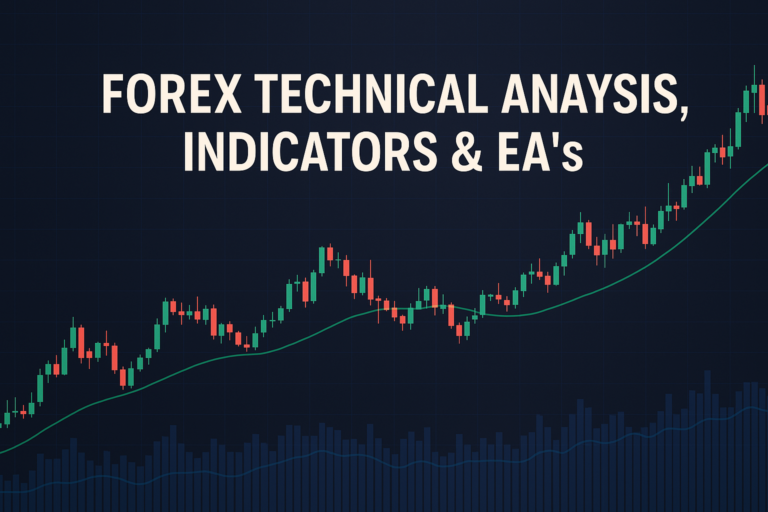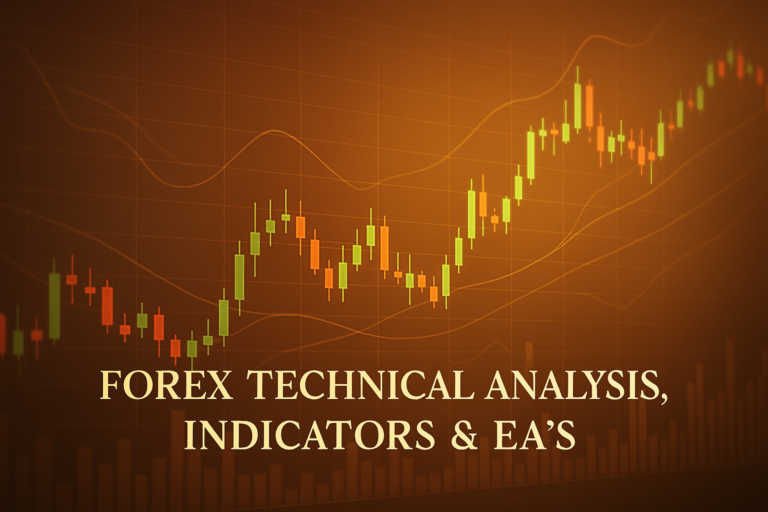
The fast stochastic oscillator is a powerful Forex trading tool that helps identify overbought or oversold market conditions for better trading decisions.
The fast stochastic oscillator is a powerful tool in the world of Forex trading. It helps traders pinpoint potential buy and sell opportunities by analyzing price movements. By comparing a currency pair’s closing price to its price range over a specific period, this oscillator reveals whether the market is overbought or oversold. Understanding the fast stochastic oscillator can be crucial for traders aiming to make informed decisions in the ever-changing Forex market.
However, both beginners and professional traders often find themselves struggling with the fast stochastic oscillator. The complexity of interpreting its signals can lead to confusion and misjudgment. Many traders miss out on opportunities because they don’t fully grasp how to use this tool effectively. Therefore, it’s essential to learn and apply the fast stochastic oscillator properly to reap its benefits in trading.
In this article, we will explore the fast stochastic oscillator in detail, covering its history, advantages, disadvantages, and various trading strategies. We will also provide a step-by-step guide on how to apply it on MT4 and MT5 platforms, ensuring you are well-equipped to use this tool in your trading journey.
One essential concept in Forex trading is the stop loss trigger. It helps protect your investments by automatically closing a trade when it reaches a certain loss threshold, preventing further losses.
What is a fast stochastic oscillator?
Let’s break it down. The fast stochastic oscillator is a technical indicator that measures the momentum of price movements. You can think of it as a tool that tells you whether a currency pair is too high (overbought) or too low (oversold) compared to its recent prices. This is done by looking at the closing price in relation to the price range over a set period. For example, if the price is nearing its highest point, the oscillator will reflect that it is overbought, signaling a potential sell opportunity.
Types of fast stochastic oscillator
There are different types of fast stochastic oscillators, including Simple, Exponential, and Weighted. Each type has its way of calculating price momentum. The Simple stochastic oscillator is the most commonly used, as it provides a straightforward look at price movements. The Exponential version gives more weight to recent prices, making it more responsive to quick changes. The Weighted oscillator balances both recent and past prices, offering a mixed view. Understanding these types can help you choose the one that fits your trading style.
How fast stochastic oscillator smooths out price action
The fast stochastic oscillator smooths out price action by averaging price movements over a specific period. This averaging helps filter out the noise in the market, allowing traders to see the overall trend more clearly. For example, if a currency pair is experiencing wild price fluctuations, the oscillator can provide a clearer picture of whether it’s generally trending upward or downward.
Common periods used and why
Traders typically use periods of 14, 21, or 9 days when applying the fast stochastic oscillator. A 14-day period is popular among many traders as it strikes a balance between responsiveness and stability. Shorter periods like 9 days can react quickly to price changes but may produce more false signals. Longer periods, like 21 days, tend to smooth out the fluctuations but might miss quick trading opportunities. Choosing the right period is key to aligning the oscillator with your trading strategy.
The History of fast stochastic oscillator: How It Became Popular
Origin of fast stochastic oscillator
The fast stochastic oscillator was created by George Lane in the late 1950s. Lane developed this tool to help traders identify market momentum and potential reversals. He believed that understanding the relationship between closing prices and price ranges could greatly improve trading decisions. His innovative work laid the foundation for what we now know as the fast stochastic oscillator.
When did traders start using it widely?
In the 1980s and 1990s, the fast stochastic oscillator began gaining popularity among traders. As more people entered the Forex market, they started looking for reliable tools to assist with their trading strategies. The fast stochastic oscillator, with its easy-to-understand signals, quickly became a favorite among both novice and experienced traders.
Real-life stories
Many professional traders credit the fast stochastic oscillator for significant gains in their trading careers. For example, a trader named Sarah used this tool to spot a potential reversal in a currency pair she was monitoring. By acting on the signals from the oscillator, she successfully entered a trade just before a price surge, resulting in substantial profits. These real-life success stories inspire many traders to explore the fast stochastic oscillator.
Advantages and Disadvantages of fast stochastic oscillator
Advantages:
The fast stochastic oscillator offers several advantages for traders:
- Helps identify trends easily: It provides clear signals about whether a currency pair is overbought or oversold.
- Useful for dynamic support and resistance: The oscillator can help identify key price levels for potential reversals.
- Works well for crossover strategies: Traders can use crossovers with the oscillator to trigger buy or sell signals.
Disadvantages:
However, the fast stochastic oscillator also has its drawbacks:
- lags behind price movements: Due to its nature of averaging prices, it may not react quickly enough to rapid market changes.
- Can give false signals in sideways markets: When the market is ranging, the oscillator may produce confusing signals, leading to potential losses.
How to Apply fast stochastic oscillator on MT4 & MT5
Step-by-step guide to adding fast stochastic oscillator on charts
To add the fast stochastic oscillator to your charts in MT4 or MT5, follow these simple steps:
- Open your trading platform and select the currency pair you want to analyze.
- Go to the “Insert” menu, then “Indicators,” and choose “Oscillators.” Find “Stochastic Oscillator.”
- Click on it, and it will appear on your chart.
Customizing fast stochastic oscillator settings
You can customize the fast stochastic oscillator settings to best fit your trading style. Adjust the periods, colors, and types to make it visually appealing and functional for you. For example, you might set the periods to 14 and choose colors that stand out against your chart background.
Saving templates for easy application
After customizing your fast stochastic oscillator, save your template for future use. This way, you won’t have to repeat the setup every time you open a new chart. Simply go to the “Template” menu and save your current settings for quick access later.
5 to 7 Trading Strategies Using Only fast stochastic oscillator
All Time Frame Strategy (M5 to D1)
This strategy can be applied across different time frames, allowing traders to adapt their approach based on their trading style. For instance, if the fast stochastic oscillator indicates an overbought condition on the M5 chart, it may signal a sell opportunity. Conversely, if it shows an oversold condition on the D1 chart, it could suggest a buying opportunity.
Trending Strategies
In trending markets, the fast stochastic oscillator can help traders identify entry points. For example, if the oscillator crosses above 20, it may indicate a buying opportunity in an uptrend. Conversely, if it crosses below 80, it could signal a potential sell opportunity in a downtrend.
Counter Trade Strategies
Counter trading involves going against the current trend. For example, if the fast stochastic oscillator shows that a currency pair is overbought, a trader might consider selling, expecting a price correction. This strategy requires careful analysis and risk management.
Swing Trades Strategies
Swing trading involves capturing short- to medium-term price movements. Using the fast stochastic oscillator, traders can identify potential reversals. For instance, if the oscillator indicates oversold conditions during a downtrend, it may signal a buying opportunity as the price begins to recover.
5 to 7 Trading Strategies Combining fast stochastic oscillator with Other Indicators
All Time Frame Strategy (M5 to D1)
Combining the fast stochastic oscillator with moving averages can enhance trading signals across all time frames. For example, if the oscillator indicates overbought conditions while the moving average is trending upward, it may signal a potential sell opportunity in an uptrend.
Trending Strategies
In trending markets, pairing the fast stochastic oscillator with the Relative Strength Index (RSI) can provide additional confirmation. If both indicators signal overbought conditions, it strengthens the case for a selling opportunity.
Counter Trade Strategies
Using the fast stochastic oscillator alongside Bollinger Bands can be effective for counter trading. If the oscillator indicates overbought conditions and the price touches the upper Bollinger Band, it may signal a potential selling opportunity.
Swing Trades Strategies
Combining the fast stochastic oscillator with Fibonacci retracement levels can help identify swing trade opportunities. If the oscillator shows oversold conditions near a key Fibonacci level, it may indicate a potential buying opportunity as the price is likely to bounce back.
Additionally, for deeper insights on technical indicators, consider exploring the stochrsi formula which combines the stochastic oscillator with the RSI for even more precise trading signals.
Top 10 FAQs About fast stochastic oscillator
1. What is the best setting for the fast stochastic oscillator?
The best setting often depends on trading style. A common choice is a 14-period setting, but you can experiment with different periods to see what works best for you.
2. Can the fast stochastic oscillator be used in all markets?
Yes, the fast stochastic oscillator can be applied in various markets, including Forex, stocks, and commodities. However, effectiveness may vary based on market conditions.
3. How do I interpret the signals from the fast stochastic oscillator?
Generally, readings above 80 indicate overbought conditions, and readings below 20 suggest oversold conditions. Traders look for crossovers and divergences to make trading decisions.
4. Is the fast stochastic oscillator suitable for day trading?
Absolutely! The fast stochastic oscillator is popular among day traders due to its ability to provide quick signals for potential trades.
5. What is the difference between fast and slow stochastic oscillators?
The fast stochastic oscillator reacts more quickly to price changes, while the slow stochastic oscillator smooths out the signals, making it less sensitive to sudden market movements.
6. Can I use the fast stochastic oscillator with other indicators?
Yes, combining the fast stochastic oscillator with other indicators, like moving averages or RSI, can provide a more comprehensive view of market conditions.
7. How can I avoid false signals with the fast stochastic oscillator?
To minimize false signals, consider using additional confirmation from other indicators or trading with the trend rather than against it.
8. What time frames work best with the fast stochastic oscillator?
The fast stochastic oscillator can be used on any time frame, but it is particularly effective on shorter time frames like M5 and M15 for quick trades.
9. How often should I monitor the fast stochastic oscillator?
It’s advisable to monitor the oscillator regularly, especially during active trading sessions, to capture potential trading opportunities as they arise.
10. Can beginners use the fast stochastic oscillator?
Yes! While it may take some time to understand and interpret, beginners can benefit from using the fast stochastic oscillator as part of their trading toolkit.
Conclusion
In summary, the fast stochastic oscillator is a valuable tool for Forex traders looking to enhance their decision-making process. By understanding its signals, advantages, and disadvantages, you can better navigate the Forex market. The key is to practice using the fast stochastic oscillator in a demo account before applying your strategies in real trading.
As you explore various strategies, remember to remain patient and disciplined. The fast stochastic oscillator can be a game-changer, but testing and honing your approach is vital to achieving long-term success in Forex trading.
Want to build a solid foundation in forex? Here’s a recommended read EToro Academy, TradingView
Expand Your Knowledge
- 📌 Forex Trading Learning Road Map
- 📌 Forex Trading Course with no Fees
- 📌 Forex Trading Issues, Problems, and Solutions
- 📌 Forex Daily Forecast & Live Updates
- 📌 Forex Fundamental & News Analysis: Tomorrow’s Market Movers & Trade Opportunities
- 📌 Forex Education Hub: Learn & Profit
- 📌 Forex Technical Analysis, Indicators & EA’s
Start Trading Today
Ready to take your forex trading to the next level? Open an account with Exness, one of the most trusted platforms in the industry. 👉 Sign Up Now and trade with confidence!
My recommended broker stands out with ultra-low spreads for beginners, instant withdrawals, and zero spread accounts for pro traders.
Trusted since 2008, lightning-fast execution, no hidden fees, and a secure, transparent trading environment—giving you the edge you need to succeed. 🚀
YouTube Video Library: Related Videos
Stochastic Trading Strategy for Stock Trading | Trading Strategy For Beginners
How To Use STOCHASTIC Oscillator In Trading [ STOCHASTIC Indicator Trading Strategy ]
Why You Are Using The RSI WRONG
Stochastic (5,3,3) Best strategy
Indicators Are Nonsense
Special Stochastic RSI Settings (Advanced TradingView Indicator)
Highly Profitable Stochastic + RSI + MACD Trading Strategy (Proven 100x)
Note: The video above is embedded from YouTube and is the property of its original creator. We do not own or take responsibility for the content or opinions expressed in the video.



